Paul Kossoff's 'Stripped Top' 1959 Gibson Les Paul Standard up close and personal
Steve Clarke walks us through the features of the guitar used to wax All Right Now
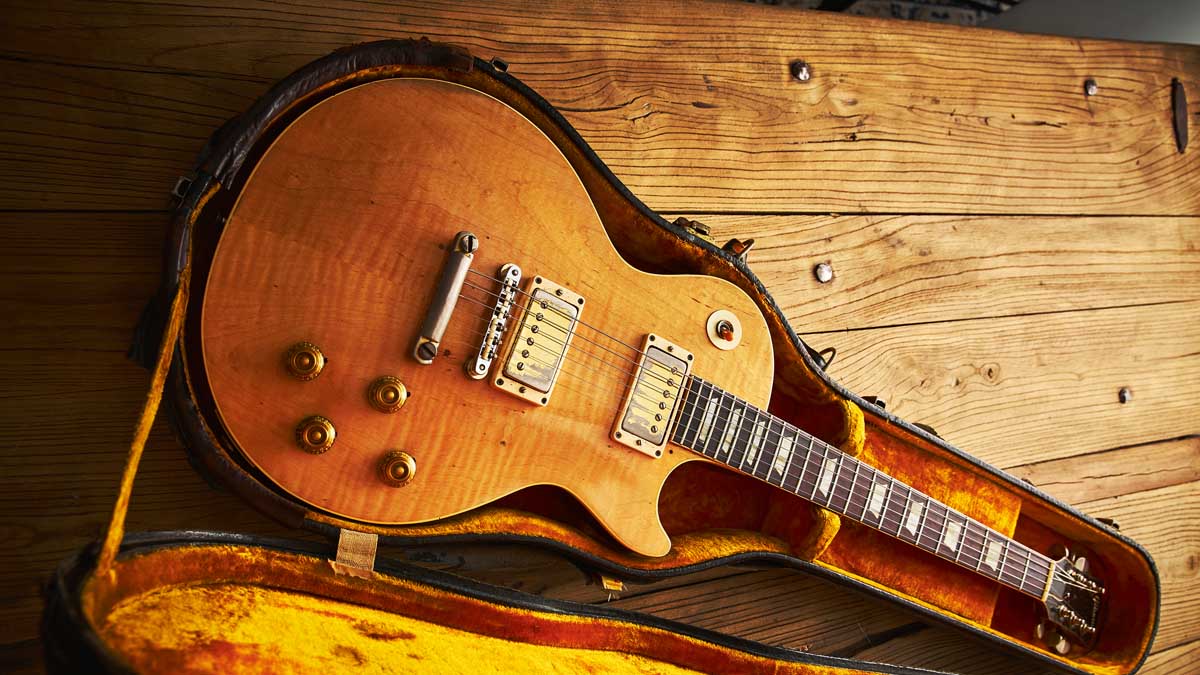
As well as being an author, authenticator of vintage guitars for Bonham’s auction house and a highly experienced repair and restoration specialist, Steve Clarke is also the man entrusted with the maintenance of Paul Kossoff’s iconic ‘Stripped Top’ 1959 Les Paul Standard, the instrument Koss used to play the Isle of Wight Festival and that he almost certainly used to cut Free’s enduring classic, All Right Now.
“I’m grateful that the guy who owns it today trusts me to be the only guy that will service it and keep it in good order,” Steve says. “So I’ve been lucky enough to be able to take the guitar apart and check it over in detail.”
As such, Steve was uniquely well placed to cut through the fog of myth that often swirls around such iconic guitars, driven by plausible – yet inaccurate – theories based on hearsay and speculation.
You’d also see it argued that it had to have been converted from a Goldtop because the back of the guitar is very dark
“The guitar was known to have a very, very slim neck so people on forums would say that Paul Kossoff had shaved the neck down,” Steve recalls. “And you’d think, ‘Wow, that’s interesting.’
“You’d also see it argued that it had to have been converted from a Goldtop because the back of the guitar is very dark. As you know, a lot of ’57 Goldtop Standards tended to have a darker brown stain on the back. So, at the time, you’d think, ‘Well, that ticks a box, so it must be.’ But when I actually examined the guitar I found out that neither thing was true.”
“Somebody from Joe Bonamassa’s management heard I was working on the guitar and passed on a message from Joe: “Could you please ask Steve Clarke whether that Paul Kossoff guitar was once a Goldtop?” And I wrote back with some of the details that indicated it wasn’t a Goldtop at any stage.
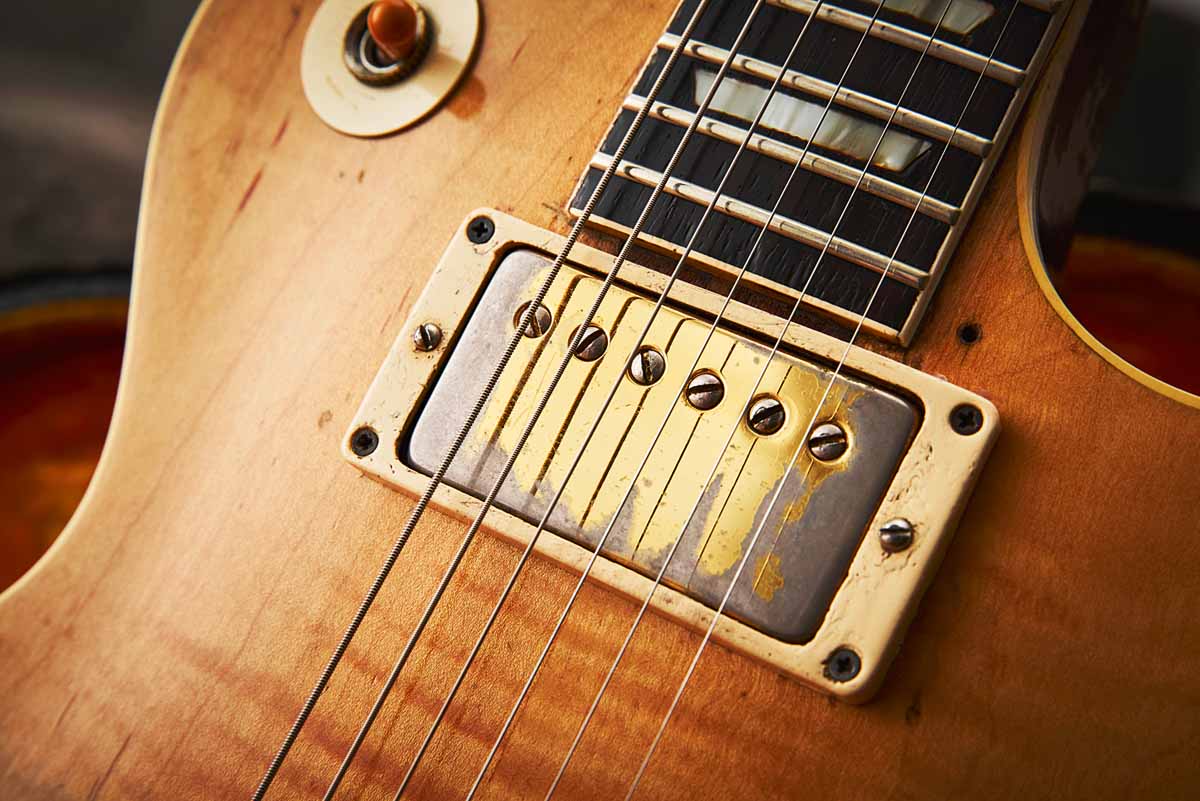
“To give just a couple of examples, the toggle-switch area still had some red stain [underneath] and it had a double-white humbucker in the neck position. You only started to see those white bobbin colours appear in late 1959, so that also argued against an earlier build.
Get The Pick Newsletter
All the latest guitar news, interviews, lessons, reviews, deals and more, direct to your inbox!
“The story goes that the company making the bobbins for Gibson ran out of the black pigment, so you started to see a lot of zebra coils and double whites appearing around at that point.”
Even hardcore ’Burst aficionados weren’t sure what the reality behind the myth was, Steve recalls.
These and numerous other details of the guitar meant Steve was able to build conclusive evidence that it was made in 1959 – and he was also able to piece together the numerous mods and changes made to the guitar while it was in Kossoff’s keeping and during the years after it passed into Mike Gooch’s hands.
Here, Steve strips away the myths behind this storied instrument, part by part.
Neck
“The first thing off when I examined this guitar in detail, I found no evidence whatsoever that Paul Kossoff or even a professional repairer had done any work on that neck, sanded it down or otherwise slimmed it, contrary to myth.
“I’ve fixed a few old ones with neck breaks and if you look very carefully and use a blacklight and what have you there are always telltale signs [of neck and refinish work]. There’s none on the Kossoff guitar. Just because this guitar has a slim neck doesn’t mean it’s not an original 1959 neck, though.
It’s not a surprise to find a slim-neck ’59 – they start to get slimmer in 1960 but it’s not unusual to find earlier examples
“George Gruhn, who has bought and sold many ’59 Les Pauls over the years, said to me, ‘Steve, we get this all the time. It’s not a surprise to find a slim-neck ’59 – they start to get slimmer in 1960 but it’s not unusual to find earlier examples.’
“These were guitars that were made following feedback from guitarists, saying, ‘Could you make it a little bit slimmer? Could you make it this or that?’ So he said it’s not unusual to find one with a slim neck. So it was great to get that confirmation.”
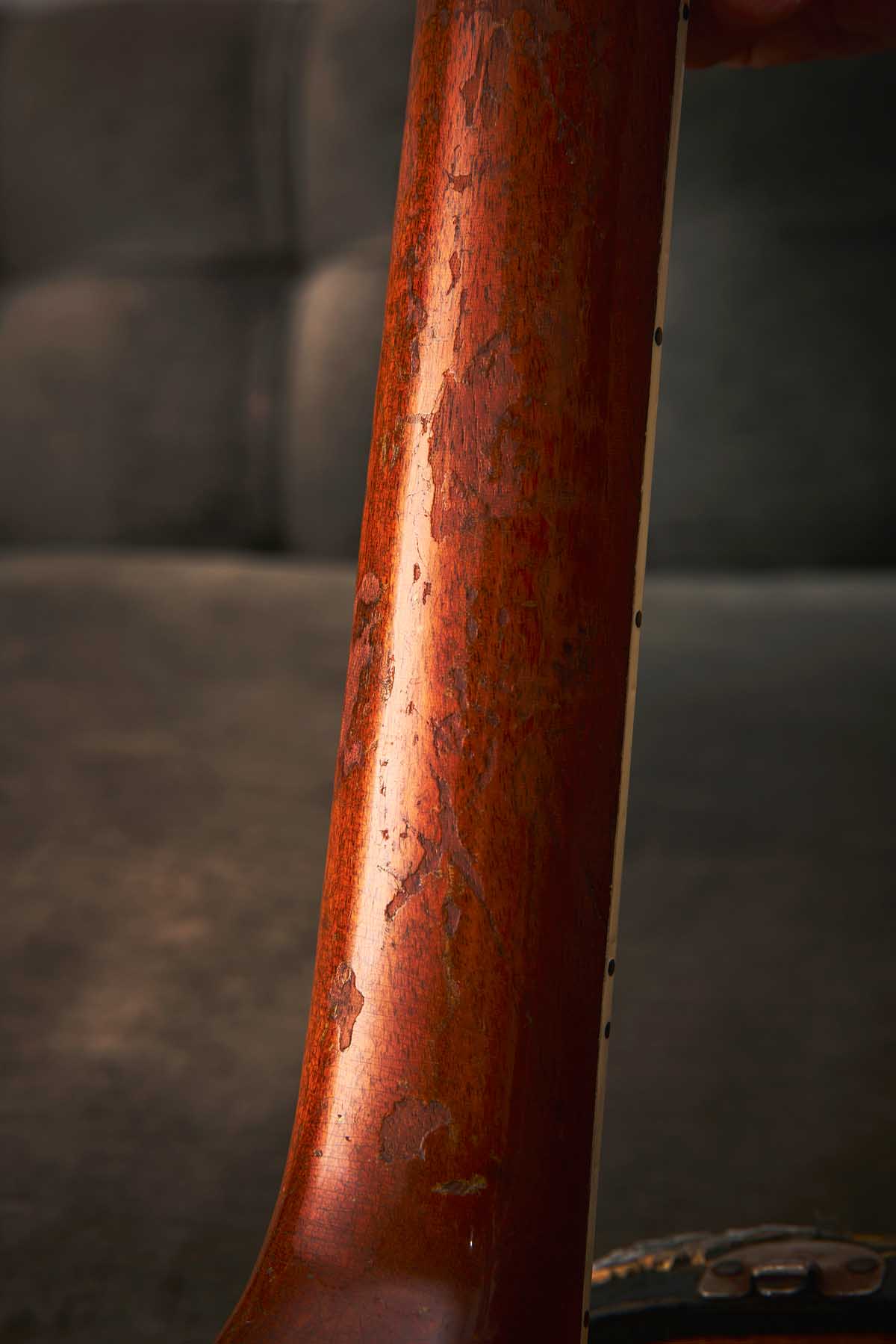
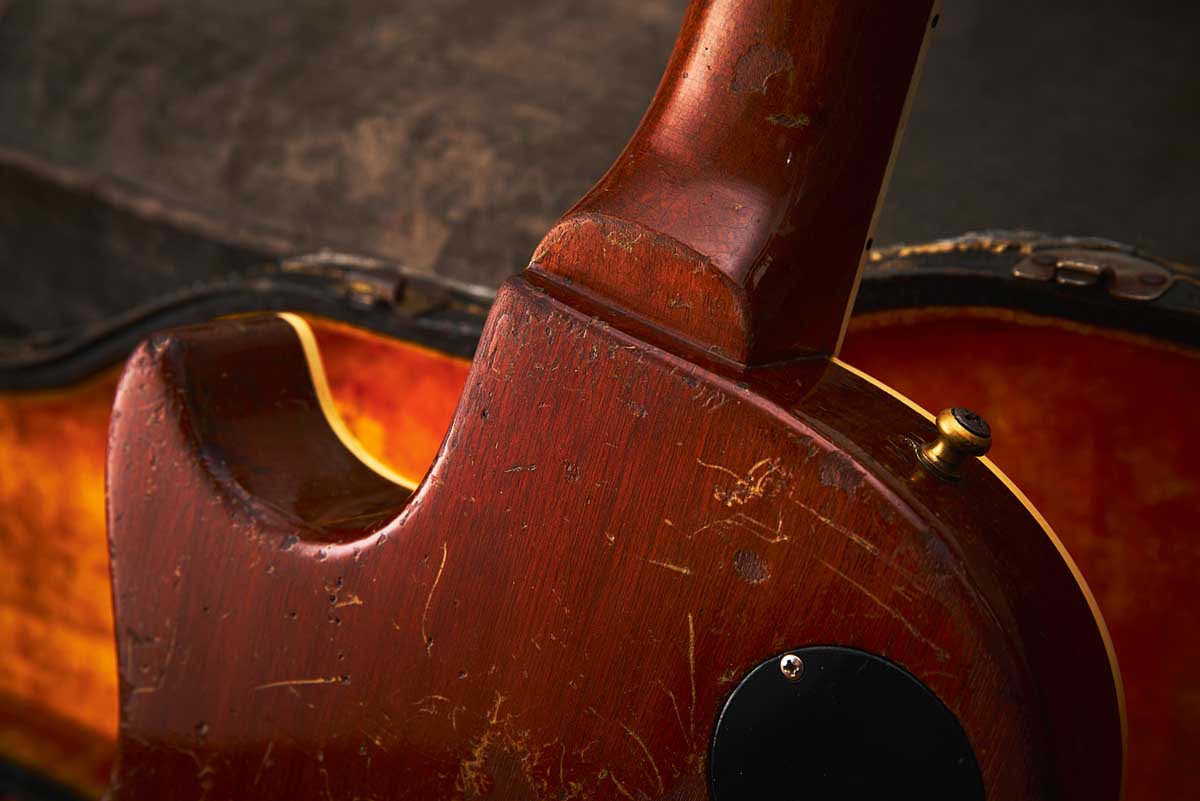

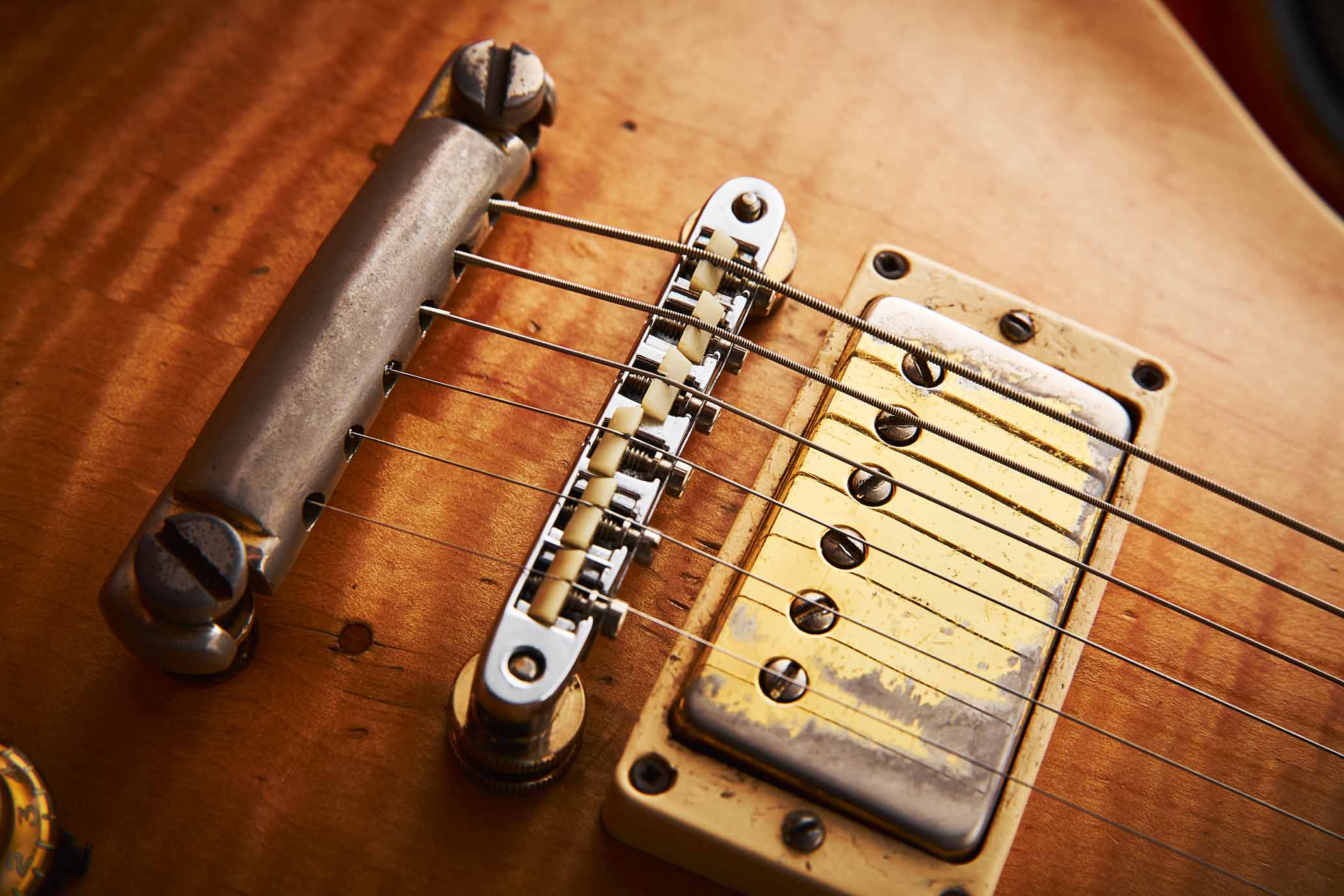
Body, top & weight
“The guitar weighs 8.74lb [3.96kg]. They were selecting lightweight woods. Good Les Pauls from that period are around about 8.5lb and they were fairly consistent. You’ll maybe get the odd one just peaking closer to 9lb but I’ve probably picked up about 15 or 16 original [1958 to 1960] Les Pauls and I’ve found them to be fairly consistently in the 8lb range.
“That’s where Gibson wanted them to be because they were aware of the weight being a selling point. By comparison, the 70s ones started to get backbreaking: they were way over 9lb, some of those things. That was because the mahogany that Gibson was getting at that time, under Norlin ownership, was getting quite dense. They couldn’t get the really lightweight mahogany they’d previously used any more.
“The guitar originally had a sunburst finish, as you’d expect. The inside of the guitar still has clearly visible traces of red in the control and switch cavities. At some point before Kossoff bought the guitar the top was stripped.
This guitar has got a particularly good flame on its top and that, along with the other features, helps date it to around 1959
“Mike Gooch bought the guitar in 1974 and he had the top sanded back again and refinished by [renowned repairer and luthier] Dick Knight in 1975, though it was left natural. This guitar has got a particularly good flame on its top and that, along with the other features, helps date it to around 1959. Some people have suggested that it’s a ’58 or a Goldtop.
“But pretty much all the ’58s that I’ve looked at are quite plain Janes in terms of the tops. There’s a certain colour about those ’58 guitars – a very different red in the lacquer – and they tend to be slightly plainer in terms of the tops.
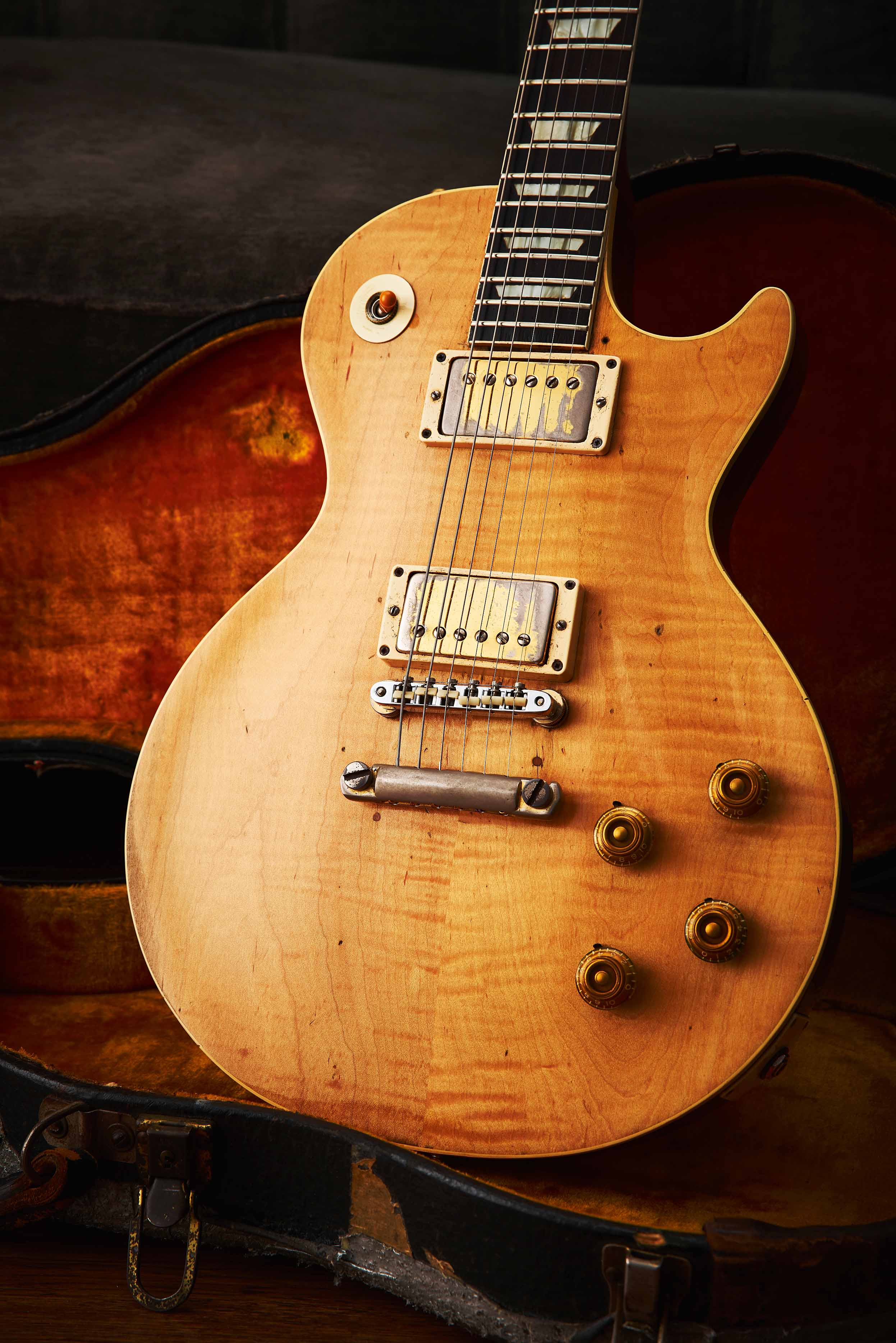
“I particularly like the top on this guitar. It looks so different from different angles. You can look at it from a few feet away and only pick up a bit of the flame. But turn it just slightly to the left or right and it really does go three dimensional.”
Finish & serial number
“Mike Gooch had the guitar refinished by Dick Knight after he bought it because his father didn’t like the idea that he’d spent so much money on a guitar that was scruffy and beaten up, would you believe!
“It was in a poor state by then – the whole top was blackened in places where the sweat had soaked into the wood. Dick Knight did the refinish, but it was really only the top that I could see had been sanded down so that black perspiration marks could be removed.
“In comparison with the top, the back of the guitar just looks like it’s been dragged down a motorway. It’s really quite tatty, so it never had a proper refinish on the back.
The back of the guitar just looks like it’s been dragged down a motorway. It’s really quite tatty
“The back and the reverse of the neck may have had a very light sanding and a light blowover with clearcoat to match it more closely with the refinished top, and that’s probably when the guitar lost its serial number. But only the top was fully refinished and even that’s beginning to wear through today.
“As a side note, Kossoff didn’t seem to like having scratchplates on his Les Pauls. The only one he kept the ’plate on was the black three-pickup Les Paul Custom, which was the one that he exchanged with Clapton for the Darkburst ’58 Les Paul. But other than that he’d take the ’plates off his Standards.”
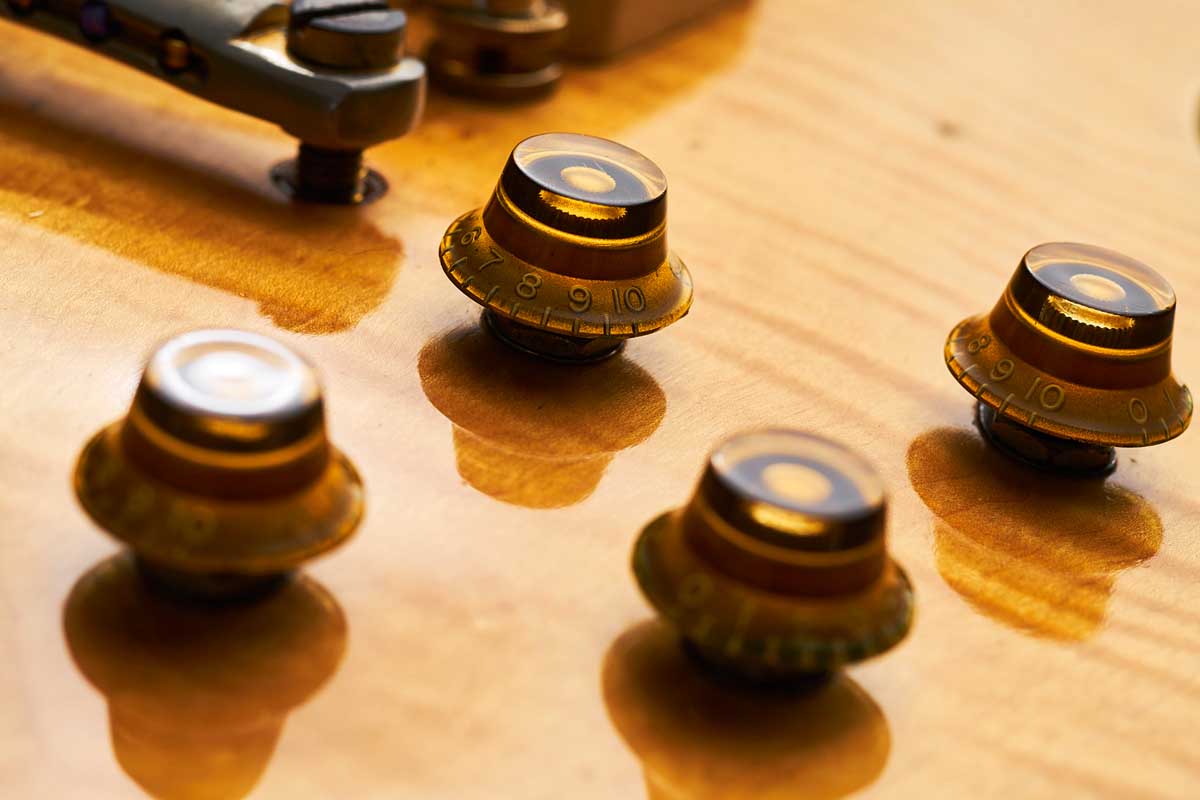
Back
“The back looks like a truck has run over it, in terms of wear, and is very dark in colour. But that’s not as unusual for the year as you might think. The backs of some of these Les Pauls do vary in colour and there’s lots of reasons for that.
“Different blocks of mahogany will vary – some are quite light, some are quite dark. And when you put a stain on them, if it’s a dark piece of mahogany it’ll go darker still, obviously. Then when it oxidises over the years, it takes on this chocolatey brown look that almost looks like the ’57s where they deliberately did the backs dark.”
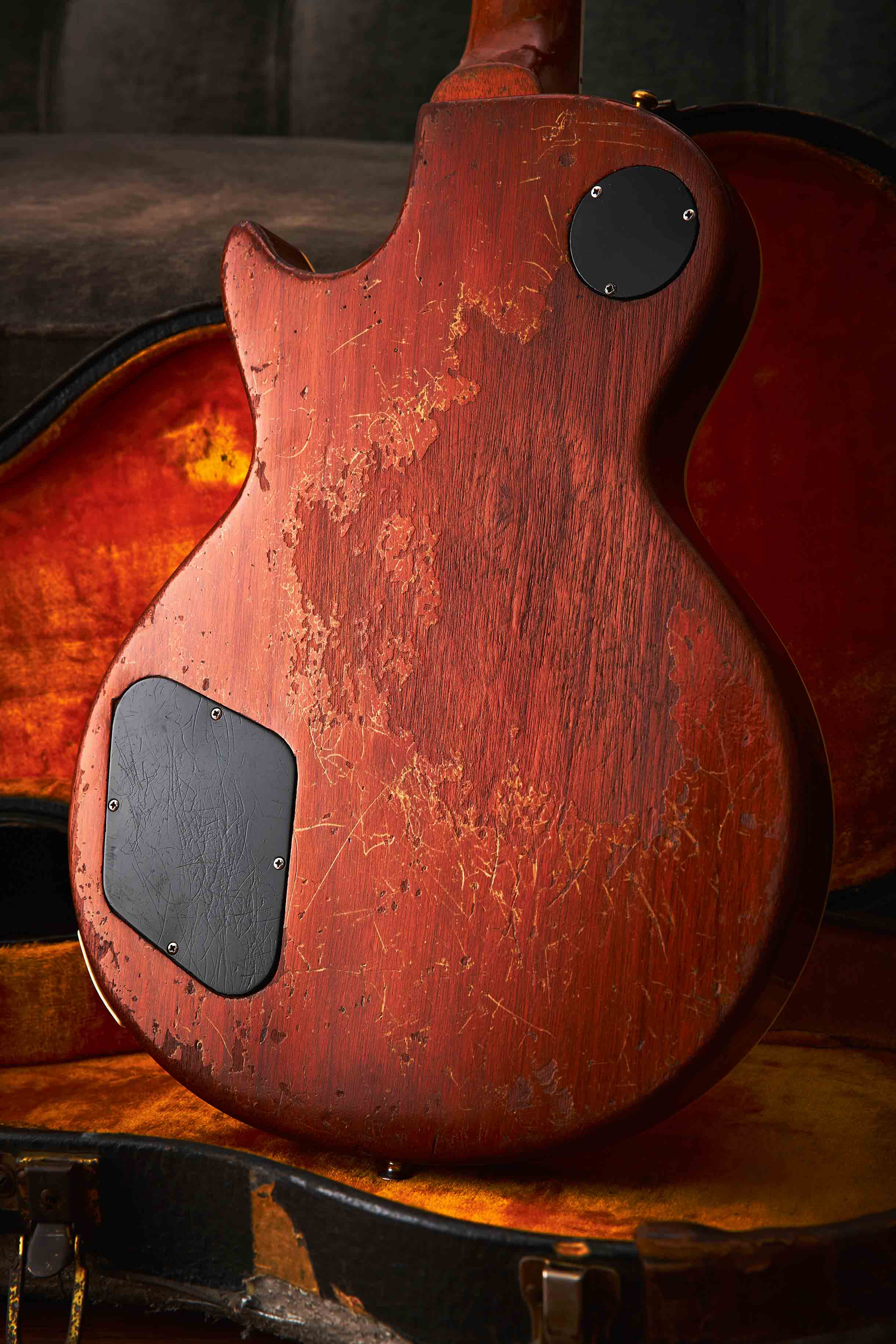
Pickups
“The pickups are fairly typical in output for the model and year. The neck, whichis a double-white bobbin PAF, reads at 8.38kohms DC resistance whereas the bridge, which is either a double black or a zebra under the cover, comes in at 7.99k.
“Among the ’Bursts I’ve examined I’ve tended to find double whites are slightly hotter in output than other PAFs and I don’t know why that is. And I don’t believe Gibson would have done that deliberately; maybe it’s just pure coincidence that the ones I’ve seen have always been slightly on the hotter side.
“We’re not talking massively so, though – and really these pickups are just about where they should be for the model and year. The pickup covers were changed from the nickel-plated originals to gold covers when Mike Gooch bought the guitar and had the top refinished.”
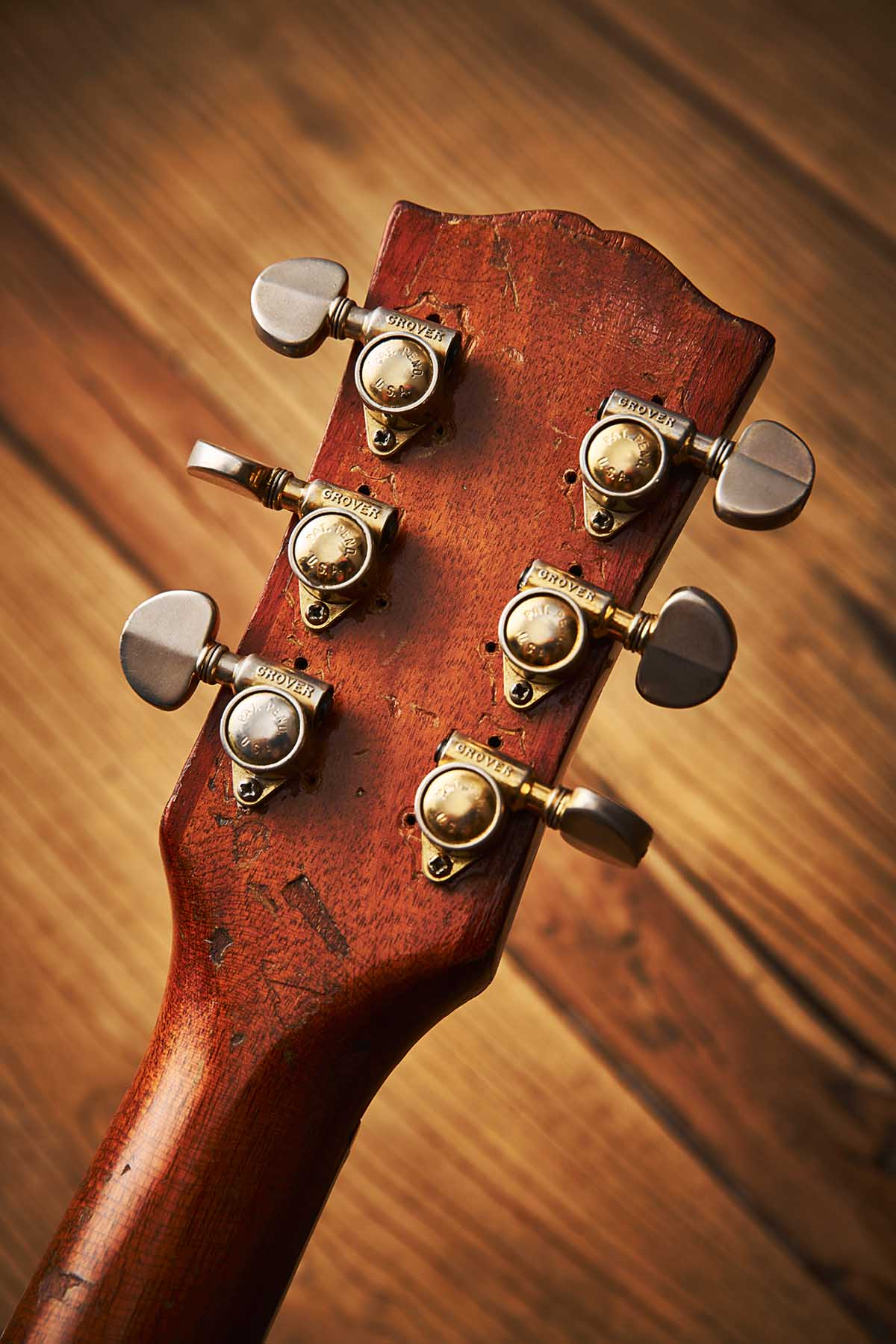
Hardware
“Gold hardware was fitted at the time of the Dick Knight refinish. But the original parts were left in the case from when Koss had it. The nylon saddles, the original toggle switch were all there… case candy doesn’t come much better than that! The original bridge was replaced with a gold one, and that’s very, very worn now but you can still just about make out the remnants of the gold if you look closely.
“Some people have suggested that when he played on Top Of The Pops he was using the nylon saddles. But personally I don’t see it – in fact, you can see on the footage that not only are the saddles metal but a couple were turned round: the low E and the top E are reversed and you can clearly see they’re metal.
The nylon saddles, the original toggle switch were all there… case candy doesn’t come much better than that!
“Today, however, as you’ll see in the pictures, the nylon saddles are back on the guitar. The owner has changed the saddles back to nylon because he currently likes the sound they make. It has been said that Kossoff actually preferred the sound of these and, as I mentioned, they were in the case.
“Up at the headstock, the machineheads appear to have been changed twice from the original Klusons. The Grover Rotomatics now on the guitar were fitted around the time Mike Gooch took ownership of the guitar but additional offset screwholes suggest a third set was fitted between the Klusons and the current machineheads.”
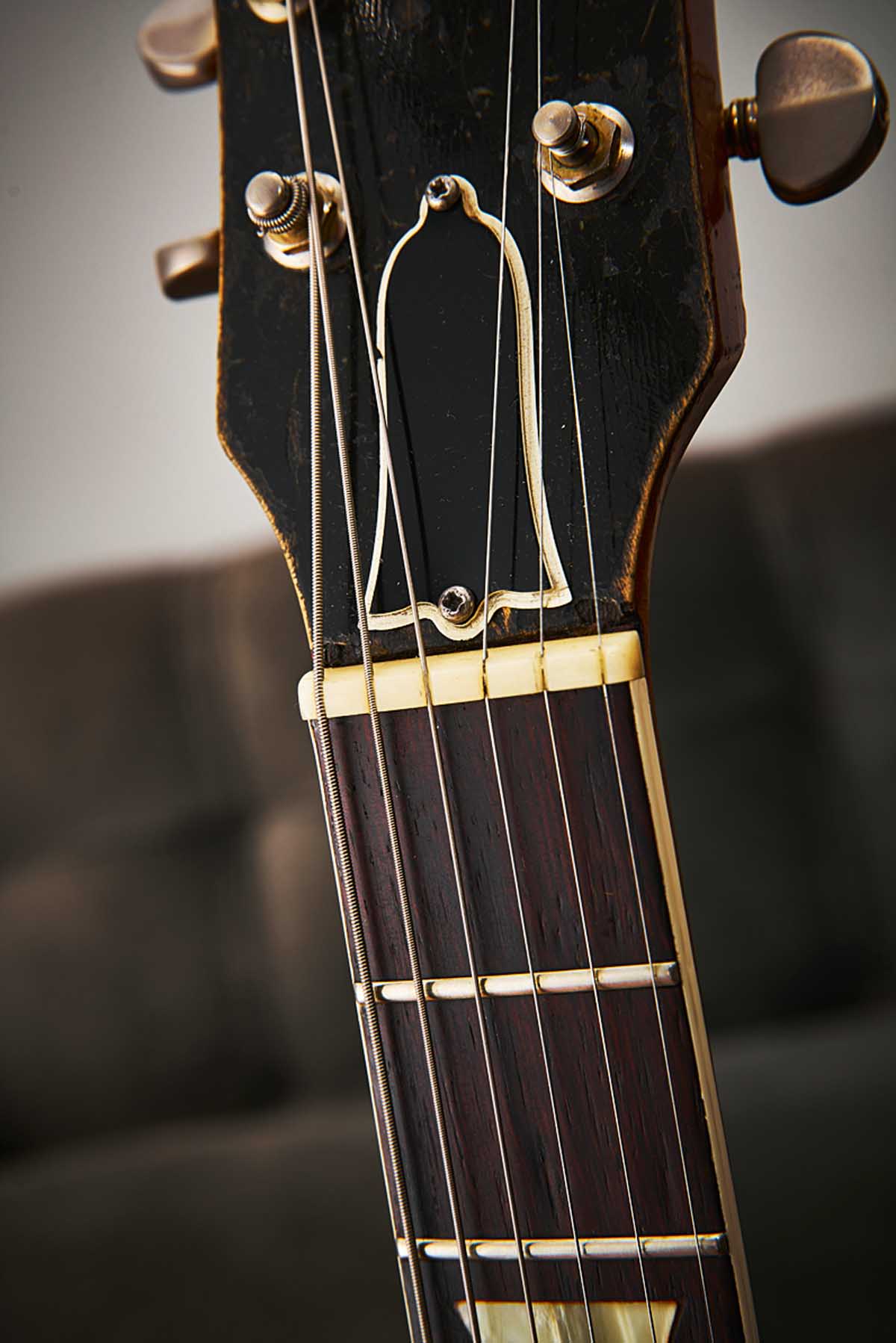
Tech Specs
- BODY: Mahogany back, maple
- bookmatched top
- NECK: Mahogany
- HEADSTOCK: Low E side 16.26mm; top 14.55mm; width at top edge 78.54mm; thickness at 1st fret 20mm and 12th fret 22.25mm; 16th fret measurement 54.68mm
- NUT: 42.56mm
- FINGERBOARD: Brazilian rosewood
- FRETS: 2.61mm
- HARDWARE: Grover Rotomatic machineheads; Gibson Tune-o-Matic ABR-1 bridge – 83.9mm long and 10.76mm wide (post-to-post 75mm)
- ELECTRICS: PAF pickups (bridge 7.99kohms, neck 8.38kohms); Gold bonnet type control knobs –18.72mm at waist, 27.27 on numbered edge
- CONTROL CAVITY: Centralab volume and tone potentiometers, Sprague Bumblebee capacitors (paper-in-oil type)
- WEIGHT (kg/lb): 3.96/8.74
- TOGGLE SURROUND: 33.34mm
- PICKUP SURROUND: 89.31mm long, 45.2mm wide
- BODY THICKNESS: 49.41mm at toggle area and 47.09mm at back of tailpiece (above strap button)
- TAILPIECE: 101.72mm long
Jamie Dickson is Editor-in-Chief of Guitarist magazine, Britain's best-selling and longest-running monthly for guitar players. He started his career at the Daily Telegraph in London, where his first assignment was interviewing blue-eyed soul legend Robert Palmer, going on to become a full-time author on music, writing for benchmark references such as 1001 Albums You Must Hear Before You Die and Dorling Kindersley's How To Play Guitar Step By Step. He joined Guitarist in 2011 and since then it has been his privilege to interview everyone from B.B. King to St. Vincent for Guitarist's readers, while sharing insights into scores of historic guitars, from Rory Gallagher's '61 Strat to the first Martin D-28 ever made.
“It holds its own purely as a playable guitar. It’s really cool for the traveling musician – you can bring it on a flight and it fits beneath the seat”: Why Steve Stevens put his name to a foldable guitar
“Finely tuned instruments with effortless playability and one of the best vibratos there is”: PRS Standard 24 Satin and S2 Standard 24 Satin review











